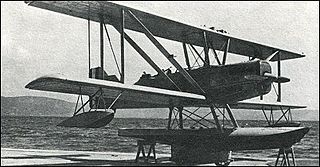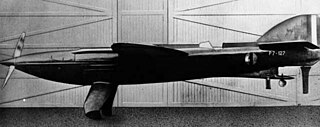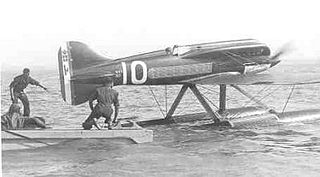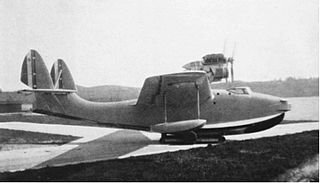
Aermacchi was an Italian aircraft manufacturer. Formerly known as Aeronautica Macchi, the company was founded in 1912 by Giulio Macchi at Varese in north-western Lombardy as Nieuport-Macchi, to build Nieuport monoplanes under licence for the Italian military. With a factory located on the shores of Lake Varese, the firm originally manufactured a series of Nieuport designs, as well as seaplanes.

The SIAI S.8 was an Italian 1910s two-seat reconnaissance flying boat.

The CANT 26 was an Italian two-seat biplane trainer built by CANT.

The Macchi L.2 was an Italian biplane flying boat developed from the earlier Macchi L.1, itself a copy of a captured Austrian Lohner flying boat.

The Piaggio P.6 was an Italian catapult-launched reconnaissance floatplane designed and built by Piaggio for the Regia Marina.

The Savoia-Marchetti S.59 was a 1920s Italian reconnaissance/bomber flying boat designed and built by Savoia-Marchetti for the Regia Aeronautica.

The Lohner L was a reconnaissance flying boat produced in Austria-Hungary during World War I. It was a two-bay biplane of typical configuration for the flying boats of the day, with its pusher engine mounted on struts in the interplane gap. The pilot and observer sat side by side in an open cockpit, and both the upper and lower sets of wings featured sweepback.

The Macchi M.5 was an Italian single-seat fighter flying boat designed and built by Nieuport-Macchi at Varese. It was extremely manoeuvrable and agile and matched the land-based aircraft it had to fight.

The Macchi M.7 was an Italian single-seat fighter flying boat designed by Alessandro Tonini and built by Macchi. A modified version of the M.7, the M.7bis won the Schneider Trophy in 1921.
The Macchi M.8 was an Italian reconnaissance/bomber flying boat designed by Alessandro Tonini and built by Macchi. It was used by the Italian Naval Aviation and was later flown by crews from the United States Navy.

The Macchi M.18 was a flying boat designed by Alessandro Tonini and produced by Macchi in Italy in the early 1920s. Originally planned as a passenger aircraft, it entered production as a bomber before eventually being offered on the civil market that it was originally intended for.

The Macchi M.24 was a flying boat designed by Alessandro Tonini and produced by Macchi in Italy during the 1920s. Originally intended as a bomber, it was eventually produced for civilian use as well.

The SIAI S.13 was an Italian biplane reconnaissance flying-boat from 1919.

The Italian Air Force Museum is an aircraft museum at Vigna di Valle, on Lake Bracciano (Lazio), in central Italy. It is operated by the Aeronautica Militare. The museum's collection has an emphasis on Italian machines and seaplanes. While maintaining the technical and historical aspects, the museum is also dedicated to the influence aviation has had on Italian art, featuring works by Futurist painters Pietro Annigoni, Giacomo Balla, and Tato; and contemporary art such as Flight: Papiers froissés by Antonio Papasso.

The Piaggio P.7, also known as the Piaggio-Pegna P.c.7, was an Italian racing seaplane designed and built by Piaggio for the 1929 Schneider Trophy race.

The Macchi M.6 was an Italian flying boat fighter prototype of 1917.

The Macchi M.67, was an Italian racing seaplane designed by Mario Castoldi and built by Macchi for the 1929 Schneider Trophy race.
The SIAI S.22 was an Italian racing flying boat, built by SIAI for the 1921 Schneider Trophy race.

The Macchi M.17 was an Italian racing flying boat built by Macchi for the 1922 Schneider Trophy race.

The Macchi M.C.99 was a prototype 1930s Italian twin-engined torpedo-bomber flying boat designed and built by Macchi.



















